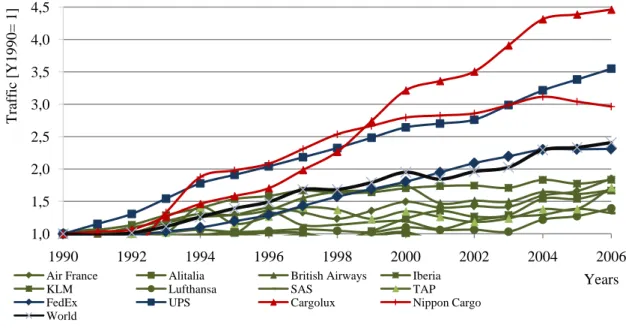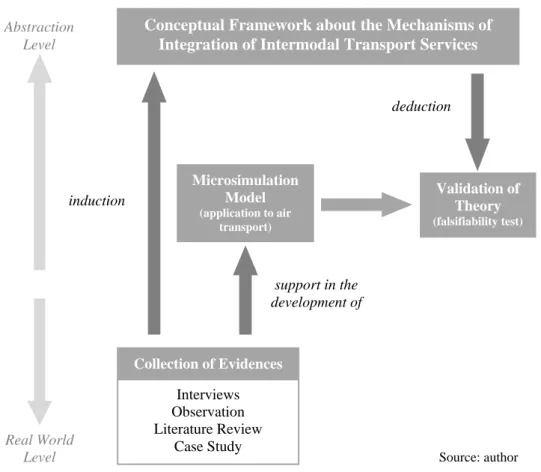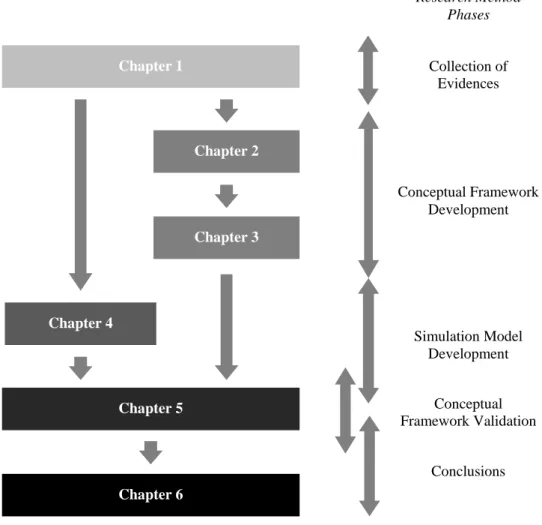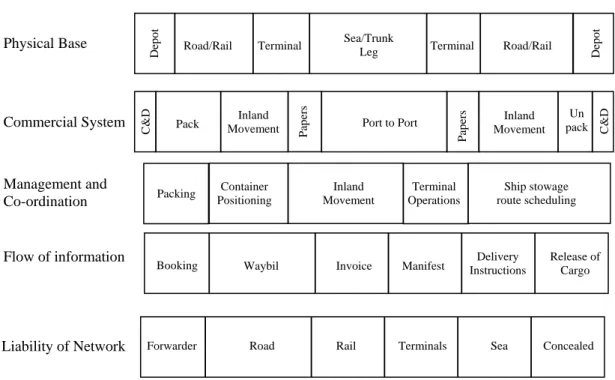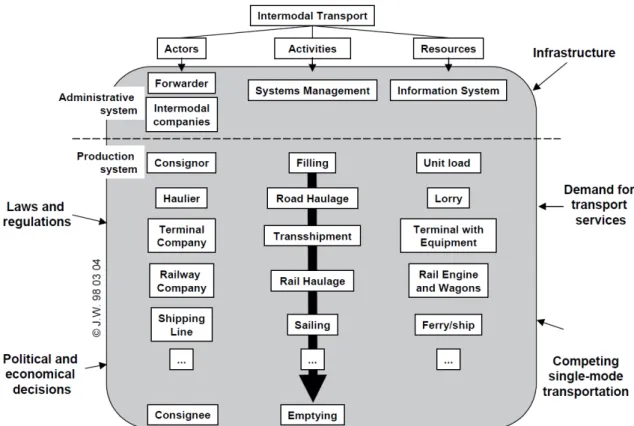The overarching objective of this research work is to contribute to the competitiveness of the combination companies - passenger air transport companies - in the air cargo market. The starting hypothesis of this research work claims that integration in intermodal freight transport services can improve the competitiveness of the combination companies in this market.
Air Cargo Business
Air Cargo Market
The various transport agents are detailed in Annexure II - Agents in the Air Cargo Sector. The various carriers in the air cargo market are detailed in Annex II - Agents in the Air Cargo Sector.
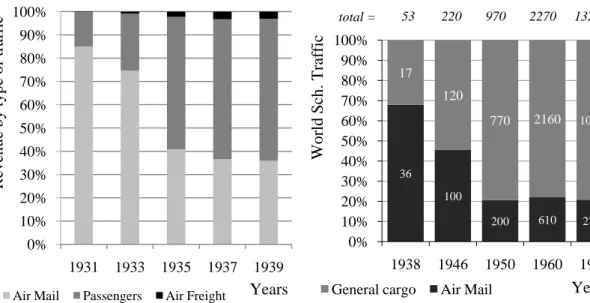
Combination companies
The third party agrees to pay a certain amount for the air cargo capacity of the air transport company. The third relates to a property of the air transport market (ie: passenger and cargo businesses), but which of course has consequences for the air cargo business in the combined companies.
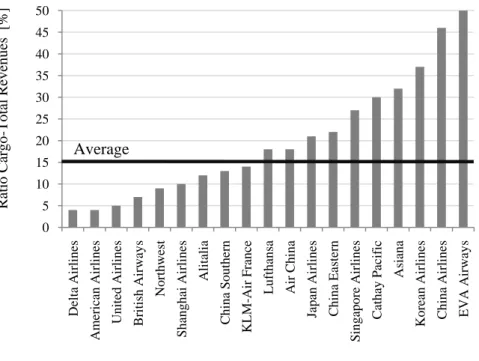
Research Motivation
Research Objective
So we can expect that intermodal transport services can contribute to improving the combination's position in the air cargo market. The second possibility: the combined company plays a dual role: as a freight forwarder to produce an intermodal transport service and as a transport agent in the intermodal transport service produced by itself.
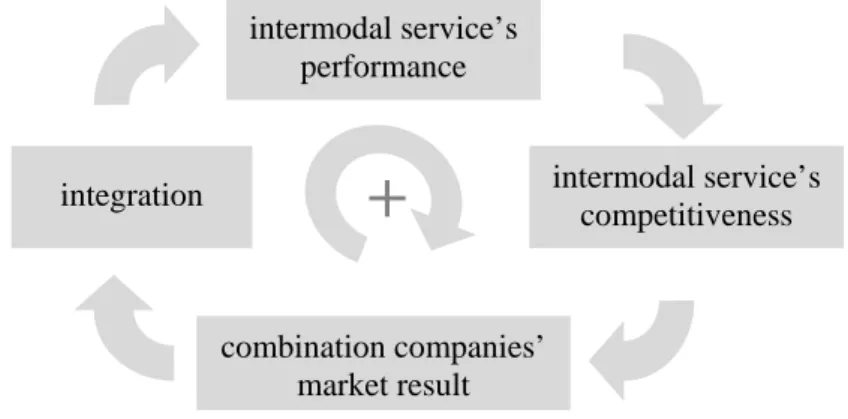
Research Hypotheses and Research Scope
In this strategy, understanding how integration works in the intermodal freight transport service is of great importance, as integration between transport agents affects its performance43. Moreover, this understanding can help the combined companies to use their capabilities more adequately or, alternatively, guide them in developing new ones.
Research Method
- Collection of evidences
- Induction
- Conceptual Framework
- Deduction of hypothesis
- Validation of the Theory
The process consists of comparing the hypothesis of the theory with the real world phenomenon. Again, this process does not produce definitive results (ie: the universality or truth of the theory) but simply.
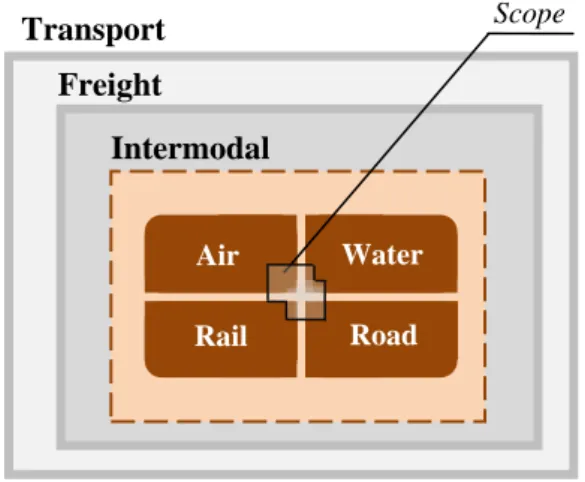
Structure of the research and of the dissertation
The model was named AFETAS, which stands for: Air Freight Transport Market Simulator (Chapter 5.2 and Chapter 5.3). The presentation of the framework is preceded by the detailing of its basic concepts: fitness, in chapter 3.1 and friction, in chapter 3.2.
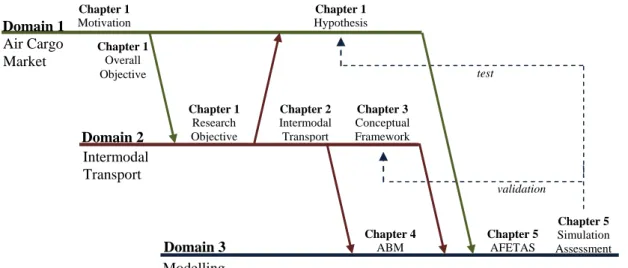
Definition of Intermodal Freight Transport
Multimodal transport is "the transport of goods by two or more modes of transport" (United Nations, 2001, p. 16). Intermodal transport is a transport service in which at least two types of transport must be involved.
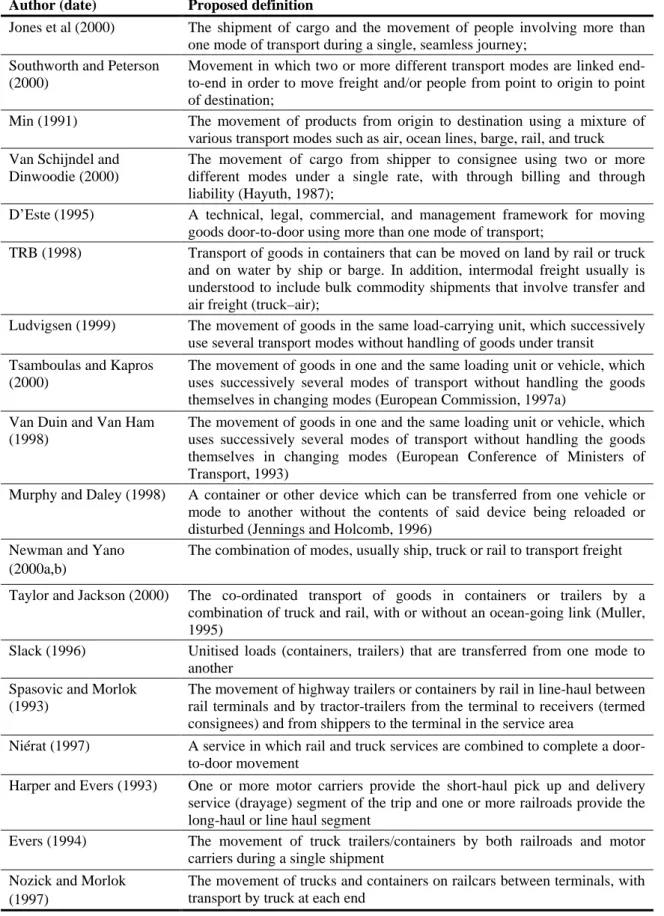
Conceptual Representation of Intermodal Freight Transport
A review to the conceptual representations of intermodal freight transport services
The performance of the intermodal freight transport service is assessed by measuring the activities. According to this author, such property will accordingly enable a simple but effective representation of the intermodal freight transport service (D'Este, 1996, pp 9). Thus, the network perspective is essentially concerned with the administrative dimension of the intermodal freight transport service (and not with the physical transport of the goods).
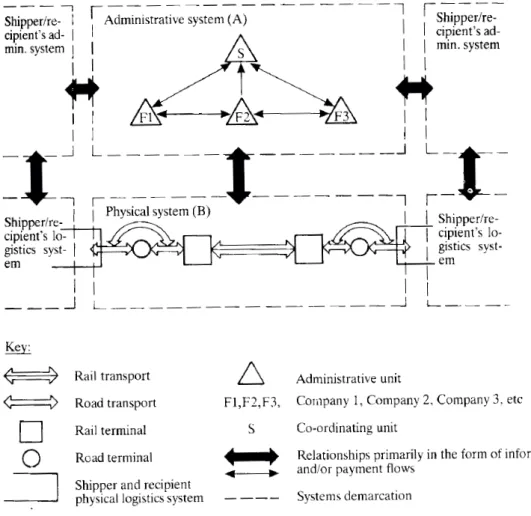
Intermodal freight transport as a process
The transport service (Activity 1) starts with the loading of the vehicle, at the place of origin. Forwarder is also responsible for clearing the goods (although of course she can hire this service). Again messages can be sent to the forwarder for updating the progress of the transport service.
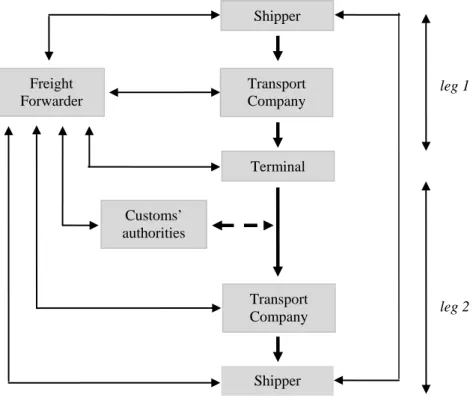
Intermodal Freight Transport as a set of flows
The physical flow corresponds to the actual movements of the goods between the origin and the destination. As mentioned earlier, the physical flow corresponds to the production of the different routes of the transport service. In this assumption, the first payment is made after completion of the transport service (activity 3).
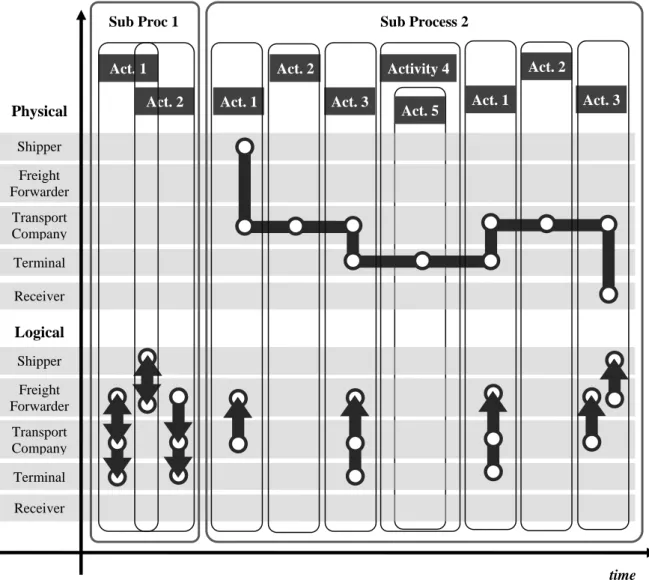
Depicting the performance of an intermodal freight transport service
This is the so-called freight forwarder's gap (gap 2 in Figure 2.11) and corresponds to the freight forwarder's inability to get the most out of the dual systems and ultimately the transport service. A third gap can also be identified between the actual performance and performance of the multimodal transport service. A definite gap can be identified and corresponds to the difference between the real performance and the performance of the multimodal transport service.
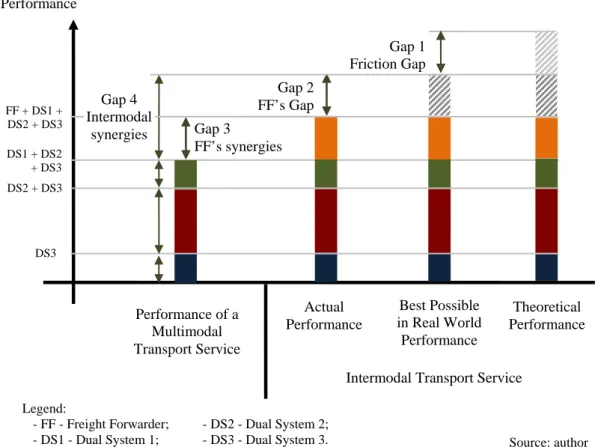
Modal choice: literature review
First, there is a consensus on the importance of the same (and few) modal choice attributes, being: reliability, transit time, safety, flexibility or price. Convenience - ease of booking and tracking and tracing, and geographic coverage of the shipping service;. This conclusion is important because it points to the possible non-static nature of modal choice factors.
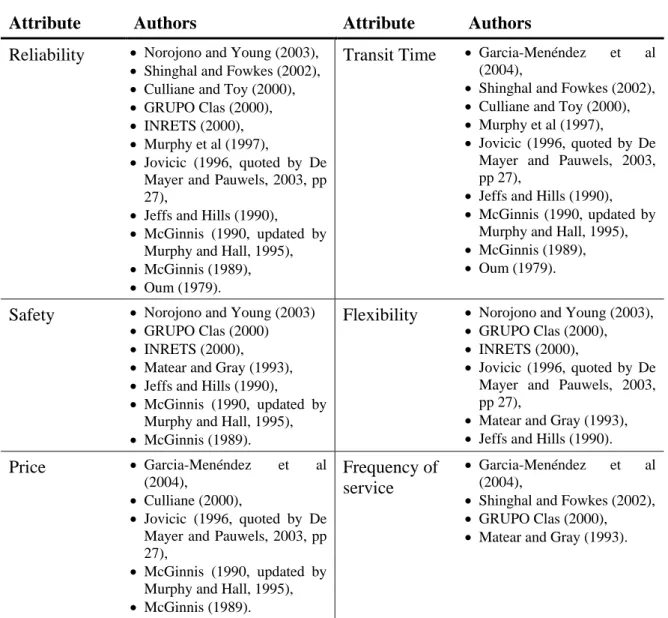
The concept of Fitness in Intermodal Freight Transport Services
A review of the concept of Fitness
However, the exploitation of the concept of fitness was not limited to the domain of the natural sciences. More recently, Richard Richards (2004) proposed an extension of the concept of fitness to the domain of art with a framework for evaluating the aesthetics of artwork. This brief review of the development of the concept of fitness allows some conclusions to be drawn.
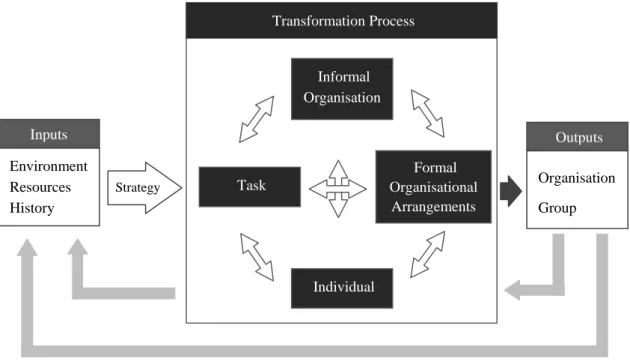
Defining Fitness
As a result, the (level of) adequacy of chain B is higher than the (level of) adequacy of chain A. Another way to review the concept of adequacy is to analyze the flows along an intermodal freight service. 114 The profile of a dual system (or forwarder) is a set of relevant characteristics that affect the performance of an intermodal freight transport service.
The concept of Friction in Intermodal Freight Transport Services
Friction occurs on the surface of contact and it has the direction opposite to movement. Looking at intermodal freight services, there are similarities between the physical concept of friction and the process of loss of performance. Finally, there is a considerable degree of similarity between the concept of friction in nature and the mechanisms responsible for the loss of performance in an intermodal transport chain.
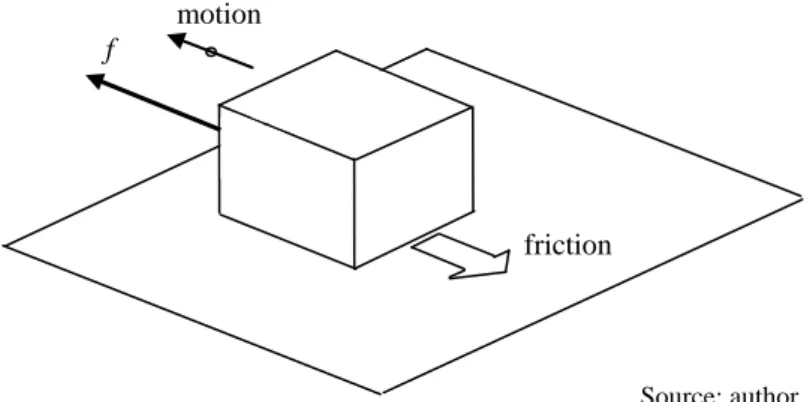
Depicting Fitness and Friction
Types of Fitness
In describing the process of an intermodal freight transport service, the logical dimension of fit refers to the logical flow. In describing the process of an intermodal freight transport service, the financial dimension of fitness refers to the financial flow. The strategic dimension of fit refers to the nature of the business relationship between the transport agents.
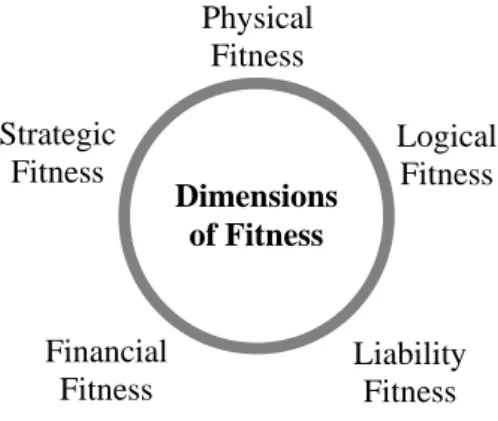
Tiers of Friction
Finally, it should be noted that the strategic dimension of relevance affects other dimensions of relevance (for example: a high commitment to intermodality may cause carriers to acquire interoperable equipment). The primary level of friction is a potential source of inconsistency in the operation of an intermodal freight transport service. The table demonstrates that some dimensions of ability are affected by only one level of friction; while others are affected more.
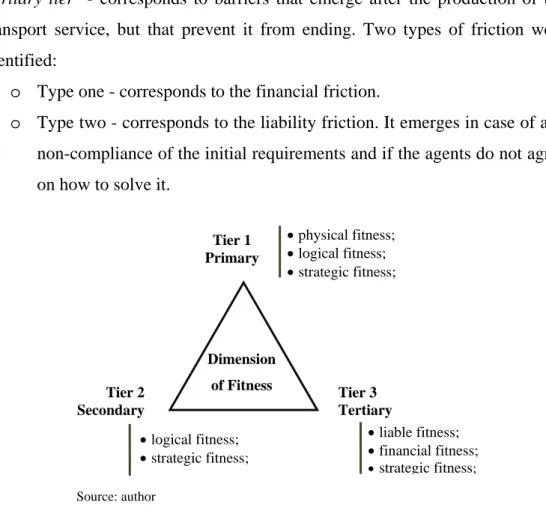
The Conceptual Framework
Building block four: "Dimensions of fitness" determines the nature of the fitness of the intermodal freight transport service (Chapter 3.3.1);. The dimensions of fitness define the variables of the dual systems (and forwarder's) profiles;. As such, the conceptual framework must be replicated for each pair of the intermodal freight transport service.

Agent and ABM’s roots
The first three are essentially theoretical, covering different topics, namely: the origin of the concept of Agent and ABM (Chapter 4.1), the concept of ABM (Chapter 4.2) and the constituent parts of an agent-based model (Chapter 4.3). Simon (1996, pp 183-184) writes that in a complex system "the whole is more than the sum of the parts in the weak but important paradigmatic sense that, given the properties of the parts and the laws of interaction, it does not ' a trivial matter to derive the properties of the whole". Miller and Page (2007, pp 10) write that "the ability to collect all the insects that live in the garden and pin them on a plate, little do to give insight into the ecosystems contained therein".
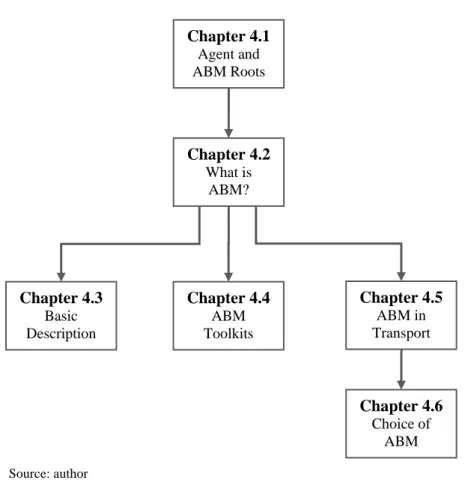
What is ABM?
- Definition
- Scope and conditions of applicability
- Advantages
- Limitations
Capturing the internal dynamics and nonlinearities of a system is precisely a key problem in the study of real problems (Miller and Page, 2007, pp 83). This is in contrast to some traditional modeling tools that require a high level of detail from the underlying processes of the system. Often such detail is not possible and modelers are forced to make simplifications or assumptions about the real world system structure.
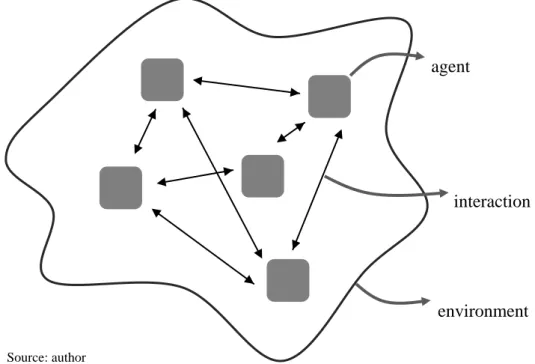
Basic description of ABM components
Agents
Truszkowski (2006, pp 6) believes that the agent “exists in an environment and, in some cases, can itself be considered a contributing part of the environment. 137 The code of conduct and ethical rules define the agent's personality and ultimately her positioning within the environment and relationships with others. This building block recreates an agent's learning ability by gathering information over time and enabling the agent to make decisions on a progressively large amount of prior information.
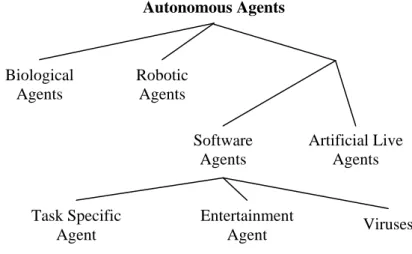
Interactions
This also means that new functionalities could be added or removed from ABM without much difficulty; or you could add complexity incrementally without changing the model.
Environment
An environment with a short lifetime is considered episodic; on the other hand, environment that persists through time is called sequential141. This means that the properties of an environment can be different at two different times, even though no agent takes any action. An environment is static when it remains unchanged except when an agent performs an action.
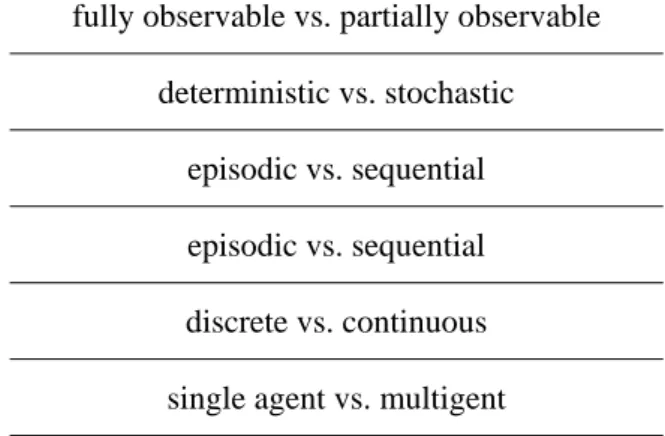
ABM Models and Development Toolkits
One of the first models related to social processes was the design by Thomas Schelling in the seventies (North and Macal, 2007, p. 51). Each cell represents a person (agent) whose goal is to be surrounded by a certain amount of neighbors of the same type. At each update, an agent's satisfaction level is measured as the amount of surrounding agents of the same type.
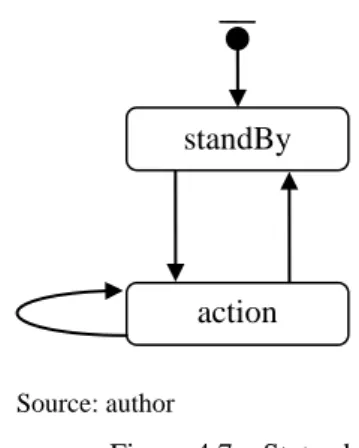
ABM in Transport
For example, thirty percent of the papers reviewed used centralized control (while ABM is especially interesting in non-decentralized situations), fifty percent did not use the possibility of dynamic structures, or sixty-four percent used ABM for decision support systems (Davidsson et al., 2005 , p. 263). The clear separation between the dimension of negotiation and the dimension of transportation provided useful insights for the development of the model of this research work. The TAPAS model also provided some useful insights for the development of the agent-based model of this research work.
The choice of ABM for this research work
Comparison with other models
First, game theory focuses on the outcome or final configuration of the interaction of parties and not on how that outcome is achieved. The first problem would concern the definition of the objective function, due to transport agents' conflicting interests. Second, the translation into mathematical terms and the subsequent solution of the problem will be very difficult (if not impossible).
Fundamentals of Modelling
Thus, every modeling development must be preceded by a careful specification of the requirements of the model. The modeler must balance a set of factors, always keeping in mind the ultimate goal of the model (and of course its validity). Formulation of dynamic hypotheses: this consists of the development of the theory for the explanation of the underlying mechanism of the problems.
Model Specifications
The model should represent an intermodal freight market, with at least one intermodal air route. The model should recreate in a real-world way the behavior of transport companies (if necessary, using real-world data). The model should recreate in a real-world manner the decision-making process of freight forwarders.
Model architecture
- Engines
- Environment
- Agents
- Interactions
The first segment of the conceptual framework (segment a.) is included in AFETAS in the negotiations between the shipper and the forwarder (segment i.). In this chapter, too, the author presents his beliefs about the mechanisms of the decision-making process172. The final step of the decision-making process is to determine the actual winner option.
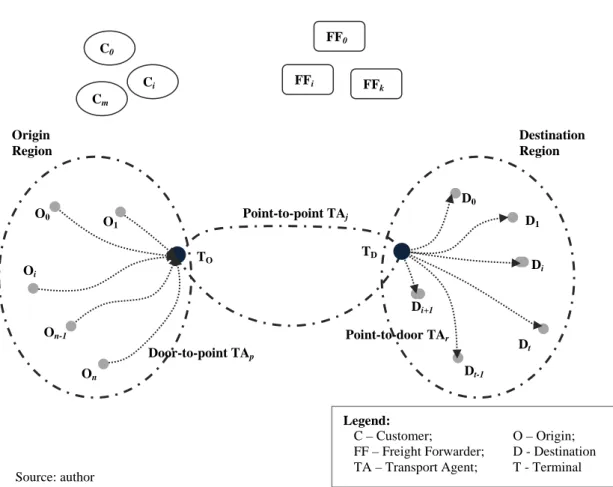
Verification and Validation of ABM models
Experiments
Design of the Experiments
Results
Final Discussion
A Taxonomy for Air Cargo
The Agents in the Air Cargo Sector
The List of Interviews
The GLS Case Study
Elements of Fuzzy Set and Fuzzy Logic
Compact Disk with AFETAS Model
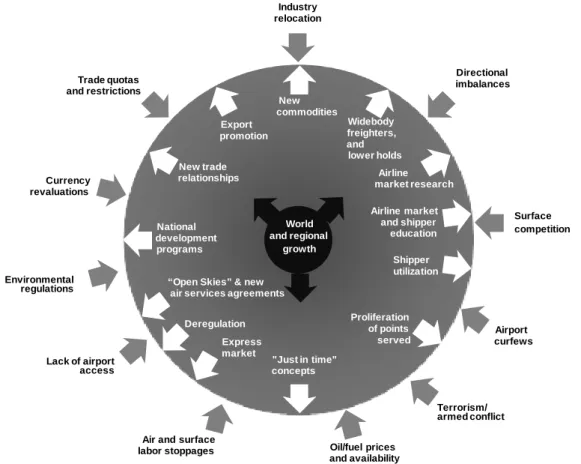
![Figure 1.5 – Air cargo market [1972 – 2009]](https://thumb-eu.123doks.com/thumbv2/123dok_br/17602430.4189803/22.892.119.729.222.526/figure-air-cargo-market.webp)
